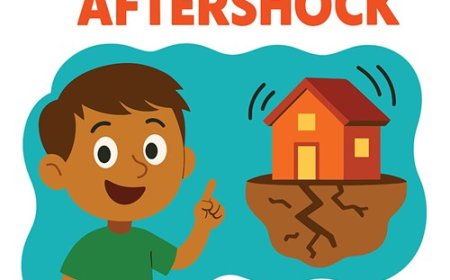Electric Circuits for Students – Series and Parallel
Learn about electric circuits including open and closed series and parallel types with examples vocabulary and a student quiz.
⚡ Electric Circuits
🌟 Introduction
Electricity needs a path to travel through, and that path is called a circuit. A circuit is like a loop or roadway for electrons, allowing them to move from a power source, through wires, to a device, and back again. Without a complete path, electricity cannot flow - just like a train can't reach its destination if the track is broken.
Circuits are everywhere: in your phone, in your school's lights, in your TV remote, and even in the traffic lights on the street. By learning about circuits, we can understand how electricity is directed, controlled, and used safely.
There are different types of circuits, and each one has its own strengths and uses. Engineers, electricians, and inventors design circuits carefully so that electricity flows exactly where it needs to go.
🔍 What Is a Circuit?
Definition: A circuit is a complete, closed path through which electric charges can flow.
A basic circuit needs three main parts:
-
Power Source - Provides the energy (like a battery or generator).
-
Conducting Path - Usually wires made of copper or aluminum.
-
Load - A device that uses the electricity (like a lightbulb, motor, or fan).
🔄 Open vs. Closed Circuits
-
Closed Circuit - The path is complete, and electricity flows normally.
-
Open Circuit - The path is broken, and electricity cannot flow (like when a switch is turned off).
🔌 Series and Parallel Circuits
Series Circuit
-
Components are connected one after another.
-
If one part fails, the whole circuit stops working (like old Christmas lights).
Parallel Circuit
-
Components are connected on separate branches.
-
If one part fails, the other parts keep working (like most home wiring).
⚙ Other Circuit Components
-
Switches - Control the flow of electricity by opening or closing the circuit.
-
Resistors - Limit the amount of current flowing.
-
Fuses/Circuit Breakers - Protect against too much current by stopping the flow.
📚 Vocabulary Words
-
Circuit - A complete path for electricity to flow.
-
Closed Circuit - A circuit with no breaks, allowing current to flow.
-
Open Circuit - A circuit with a break that stops the current.
-
Series Circuit - A circuit with components connected one after another.
-
Parallel Circuit - A circuit with components connected on separate branches.
-
Switch - A device that opens or closes a circuit.
✨ Fun Facts
-
The first electric circuits were created in the early 1800s to test batteries.
-
Parallel circuits are safer for home use because one device failing won't stop the others.
-
Your body can act as a circuit if you touch a live wire and a grounded surface - which is why electrical safety is so important.
📌 Key Takeaways
-
A circuit is a path that electricity travels through.
-
Closed circuits allow electricity to flow; open circuits do not.
-
Series circuits connect devices in a single path, while parallel circuits give each device its own path.
-
Switches, resistors, and fuses help control and protect circuits.
🖱 Interactive Multiple-Choice Quiz
1. What is an electric circuit?
A) A storage system for electricity
B) A complete path for electricity to flow
C) A type of battery
D) A power station
2. What happens in an open circuit?
A) Electricity flows normally
B) Electricity stops flowing
C) Voltage increases
D) Resistance decreases
3. Which type of circuit keeps working even if one device fails?
A) Series circuit
B) Parallel circuit
C) Open circuit
D) Broken circuit
4. What device is used to control the flow of electricity?
A) Battery
B) Switch
C) Fuse
D) Resistor
5. Which is a component in all circuits?
A) Solar panel
B) Power source
C) Motor
D) Lightbulb





















































